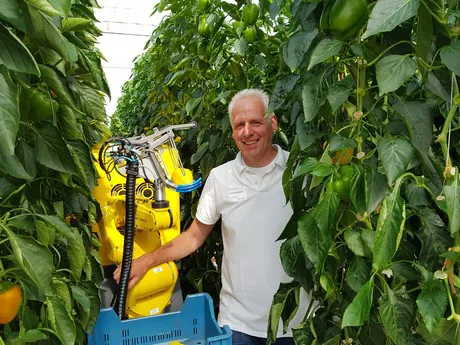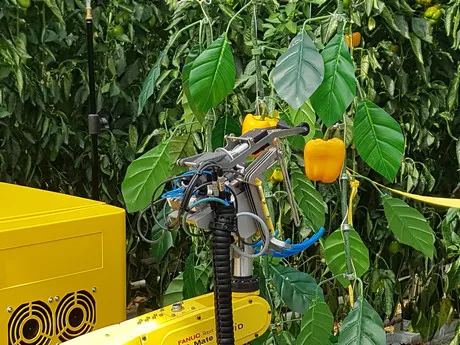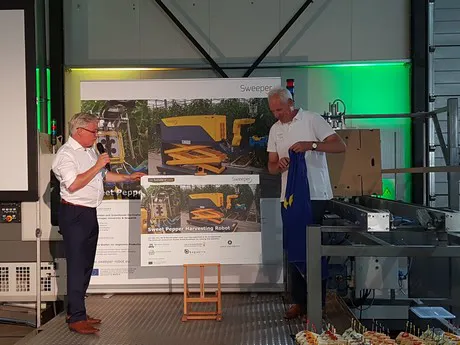Gliding over the pipe rails in the Dutch nursery De Tuindershoek is a machine, matching the bright yellow peppers on the plants. There's a mechanical sound and flashes appear. Shortly after a gripper moves toward one of the ripe fruits and a sawing sound follows next. The pepper falls into the gripper to eventually end up in the receptacle. In less than 30 seconds, the job is done and a next harvest movement is ready to start. The public gasps - the first live demonstration of the pepper harvest robot Sweeper yesterday was an exciting one.
A video by the Sweeper-consortium
Years of research preceded the development of the harvest robot. It might offer a solution to important topics: helping out growers when labour is scarce and expensive, and the demand for a product grown safe and hygienically.
Deep learningWe're not quite there yet, but so far many steps have been taken. For example, thanks to deep learning the robot was able to speed up the harvest. Based on visual data and the deep learning technique, the robot could practice in a digital crop. It's an important topic: with the many leaves and the unpredictable growth of a pepper plant, finding the ripe fruits and cutting them in the right way is a challenge for the robot.
Speed up
Right now the Sweeper manages to harvest a pepper over four times faster than its predecessor from the
CROPS-project. In an average 24 seconds a bell pepper can be harvested and in ideal laboratory circumstances even a speed of 15 seconds can be made. "For safety matters we keep it kind of slow. There's still a lot to be gained in terms of speed", the developers explain. "The most time-consuming action currently is moving the picked fruit to the collecting bin on the robot. We expect this component to be sped up quite easily."
Pepper grower André Kaashoek next to the Sweeper that has been tested in his greenhouse
The Sweeper in action in the test crop, being used in the development of the robot
Harvest scoresWorkers out, robots in? Not completely. According to the developing team a 100% score in terms of harvest isn't a reality yet. Preliminary test results in the run-up to the demonstration showed a harvest score of 62% in special conditions and only taking the fruits growing in front of the stem into account. In the commercial greenhouse the percentage was 31% and when you take the fruits into account growing in between the stems, the scores are 49% in the lab and 20% in a commercial crop.
A 100% score is not a goal either - the robot is to be an addition to a team of human workers in the greenhouse.
Project coordinator Jos Balendonck handing a plaque to André Kaashoek
When can we buy?
The Sweeper-project is supported by the Horizon 2020-program with the European Union. The funding will end in November of this year and commercial implementing will become a priority after.
Project partners Bogaerts Greenhouse Logistics is expected to play a role in this as well as the other partners (Wageningen University, Ben Gurion University, Umeå University & the Proefstation voor de Groenteteelt) and of course grower André Kaashoek with Kwekerij de Tuindershoek.
Eager to buy? That might take some more years. Current expectations are the Sweepers will be in commercial greenhouses within three years.
For more information:
 Sweeper
Sweeper
Jos Balendonck, project coordinator
jos.balendonck@wur.nl 







